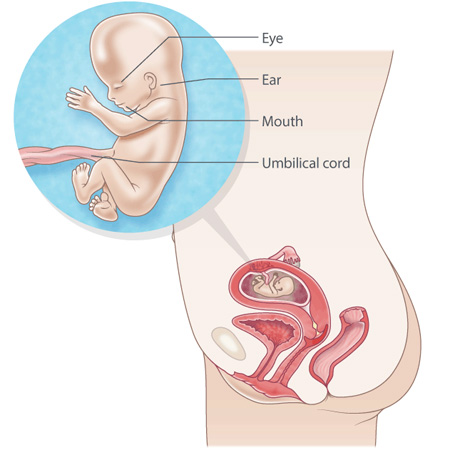You at 13 weeks pregnant
Welcome to the second trimester!
Your bump might be starting to show. You might also feel stretching around your groin and tummy. This is because the ligaments holding your uterus in place are starting to stretch.
The veins in your breasts might start to become more visible if you have light skin.

Sharing the news
It’s common to start telling friends and family about your pregnancy around this time, because the chance of miscarriage is much lower. Some people choose to use Facebook or other social media to break the news.
If you have a partner, it’s a good idea to talk with them about when and how you’d like to share the news with others. Having a plan could avoid hurt feelings, disagreements and the chance that excited family and friends spread the news for you!
Be prepared for a variety of reactions from other people when you tell them your pregnancy news.
Telling your employer
Think about a good time to share your pregnancy news with your employer. Check your agreement or contract to see whether there are specific requirements. By law, you don’t need to notify your employer at a specific time, but you need to give 10 weeks notice if you plan to take maternity leave.
When you’re ready, it can be a good idea to talk to your employer about:
- what parental leave you can take
- when you plan to start your leave
- when you plan to come back to work
- in what capacity you’d like to come back to work, including any changes to your role.
Your baby when you’re 13 weeks pregnant
This is what your baby is doing:
- Your baby measures about 7.5 cm from head to bottom and weighs about 30 g.
- Organs like the liver and pancreas have begun to function.
- The vocal cords are developing.
- Bones are hardening, and soft, fuzzy hair is growing on your baby’s eyebrows and head.